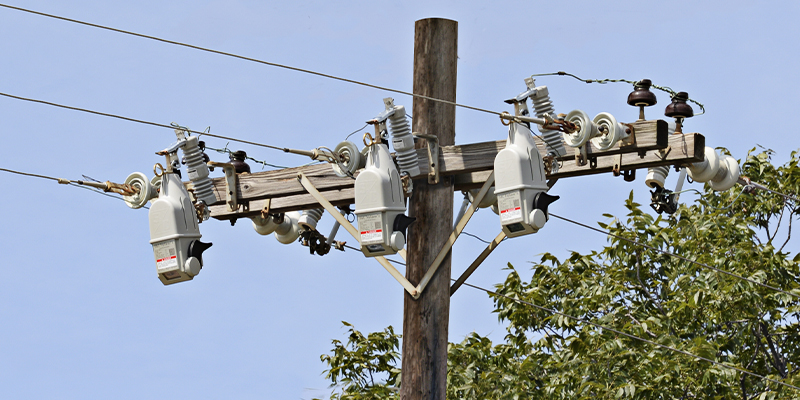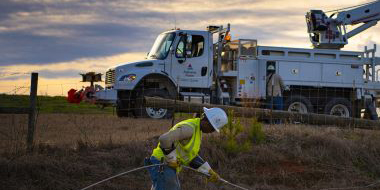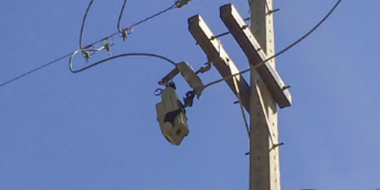Upgrading Your System? Start with Laterals. Here’s Why
Back to Top
Seventy percent.
That’s the blockbuster number here: As many as 70% of outage-driving disturbances on overhead lateral lines are temporary caused by factors like wildlife, weather, and vegetation.
A stat like this should affect business decisions, shift investment focus, and motivate strategic innovation. But so far, the industry has been slow to adopt existing solutions that would tackle this low-hanging fruit.
It’s time to change that.
By addressing this number (70%!), we can:
- Improve overall grid reliability and resilience
- Boost customer satisfaction
- Deliver qualitative benefits that can boost the industry and your utility
I hesitate to use a statement like “it’s a sure bet,” but, well, if the cliché fits …
Why Laterals Matter
Overhead laterals are the most exposed part of your grid. And given that the average distribution circuit has 21 laterals, introducing a smart device to mitigate the bulk of outages can have an immediate impact—both for your utility and your customers. The benefits add up quickly, especially if crews often travel long distances to reach faults at the grid edge.
The Hard Returns from Lateral Upgrades
Many benefits of lateral upgrades can be quantified, including:
- O&M savings. Reducing nuisance outages saves on unnecessary truck rolls and associated costs. In fact, a lateral automation upgrade could pay for itself in just a few avoided truck rolls.
- Increased reliability and resilience. Simply put, we need to keep the power on—even during ever-worsening storms. Overhead lateral upgrades can drastically improve metrics in this area, as demonstrated by the numerous utilities that have deployed such devices and seen improvements in SAIDI, SAIFI, and average number of sustained outages.
- Improved customer satisfaction. A stronger grid closer to home results in an improved customer experience. Fewer momentary interruptions can translate into fewer customer complaints.
The Strategic Returns from Lateral Upgrades
Other benefits are more qualitative but are no less valuable. These include:
- Innovation readiness. By demonstrating success with lateral upgrades, you can build trust and buy-in from stakeholders for broader smart grid initiatives.
- Environmental progress. Avoiding unnecessary truck rolls helps curb carbon emissions. And since smart lateral solutions can replace one-time use fuses and oil-based hydraulic reclosers, you can rid your grid of conventional tools that have harmful environmental impacts.
- Positive reputation. Implementing lateral upgrades shows you are a leader in strengthening the grid and in finding more efficient and effective ways to reduce outages. Having a strong brand that reflects a proactive mindset helps when you’re under public scrutiny.
- Regulatory compliance. Regulatory demands take various forms, from improving storm response, to addressing performance in underserved areas, to ensuring rates stay low while modernizing the grid. Lateral automation devices are cost-effective tools to provide tangible reliability and resiliency improvements, and deployments can target energy equity concerns.
- Line crew benefits. With modern solutions, there’s no expulsion of fragments or oil that can pose a safety threat. Improved resiliency also means fewer miles traveled in hazardous conditions.
- Operational safeguards. Smart lateral devices maintain their protective characteristics over time, reducing maintenance. There’s also a decrease in re-fusing errors, especially during major events. Fusing errors can compromise system protection and create inaccurate system models.
A Best Bet for a Lateral Upgrade Device
So, now you know why laterals are the obvious place to start as you implement grid upgrades. And here's the best part: The ideal tool for this upgrade already exists. S&C’s TripSaver® II Cutout-Mounted Recloser is an automated lateral device that can deliver on multiple fronts for your utility.
This smart device uses fault-testing technology to determine whether disturbances are temporary. If they are, the TripSaver II recloser restores power, preventing these disturbances from becoming sustained outages.
But don’t just take our word for it. Take it from utilities that have already deployed TripSaver II and seen incredible results:

Alabama Power realized $15,570 in O&M savings within a year of replacing only 20 lateral fuses with TripSaver II reclosers. After a broader implementation, the utility’s average number of sustained outages dropped from 2.1 per year to 0.47 on the laterals protected by TripSaver II reclosers. They also saw 70% SAIFI and 57% SAIDI score improvements on areas of the system where the recloser was deployed.

Brazilian utility COPEL improved its SAIDI rating by 68.1% with a TripSaver II recloser deployment, reducing the average outage duration by 45 minutes. With the deployment, COPEL met stringent regulatory performance standards fast. The deployment also allowed the utility to avoid long, and sometimes overnight, truck rolls to rural service regions, freeing up its crews for other services.
Put simply, the TripSaver II recloser offers such a high return on investment, integrates so easily into your system, and impacts customer satisfaction and system performance so much that … well, there’s that “sure bet” cliché again.
Just Do It
As you look to modernize and strengthen your grid to shoulder ever-increasing power demands, it makes sense to start where you can get the biggest return: lateral upgrades. These investments will help you put up wins early to build momentum for more upgrades and will produce immediate and substantial benefits for utilities and end users alike.
Looking for the easiest way to modernize your systems?
Connect with us to see how the TripSaver® II Cutout-Mounted Recloser can help.